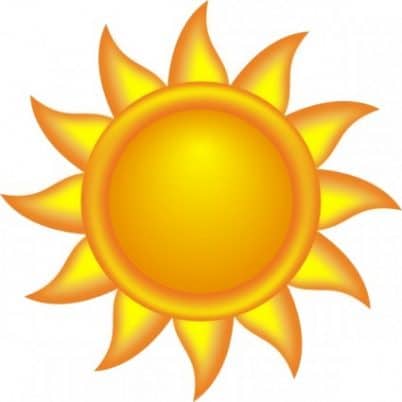 You come home from your business travels, ready to pop open a bottle of wine and relax—you’ve been gone about a week. You know exactly which type of wine you want, and you have the glasses on the counter ready to fill. You open the door to your beautiful wine cellar, preparing for the slight chill, and—something is off? You stand there for a second and then the realization sets in—it’s warm!
You come home from your business travels, ready to pop open a bottle of wine and relax—you’ve been gone about a week. You know exactly which type of wine you want, and you have the glasses on the counter ready to fill. You open the door to your beautiful wine cellar, preparing for the slight chill, and—something is off? You stand there for a second and then the realization sets in—it’s warm!
Your refrigeration unit must have broken, and it isn’t cooling your valuable wine collection. You feel a slight panic crawl up your body like a chill as you wonder how much time will I have before the heat ruins my wine? Is it already too late?
When you know the factors that affect your wine room’s temperature, you will have a better idea of how quickly you need to react in case of a cooling malfunction.
What Aspects Affect How Quickly Wine Will Go Bad?
Heat influences wine differently based on the characteristics of the wine itself and factors in the wine’s environment. Each bottle holds a particular formula for taste. Just like each bottle is unique, each wine room varies in how it protects the wine. Both the wine and the room are integral to understanding how quickly your wines can be ruined. You need to consider environmental factors of weather, room design, and temperature alongside the intrinsic qualities of the wine itself: age and oxidation.
Weather and Room Design
You may have chosen to place your wine cellar in a corner tucked away in your house, or maybe you wanted to display it in the living room for guests to see. Although the room design may have been more about how the room looked, the design also affects your wine’s exposure to heat. If any of the walls are exterior walls to the house or exposed to the sun, the weather outside could influence the overall temperature of the wine room when a unit is not cooling it. Sometimes this can even be strong enough to change the temperature of the bottles along these walls. However, if your wine is in a basement cellar with walls surround by dirt, the temperature of the soil will vary less. That factor will slow down the warming process of the room.
You also need to consider the effect weather will have on areas that light the house. If you live in a typically hot, sunny area (like inland Fort Lauderdale), you will want to avoid windows that cast direct sunlight or reflections of sunlight into the cellar. Reflections of sunlight can become more of a concern when you live near bodies of water or other reflective surfaces such as snow. The light can shine directly onto certain bottles and heat them faster than other wines in your cellar. As well, the light will speed up the process of warming a wine room when the cooling system fails and can shine directly onto certain bottles. However, if your area tends to host overcast weather, this may be of less concern for you.
Temperature Swings and the House’s Temperature

Even though you have a barrier between the sun’s direct rays and your wine collection, the heat from an outer wall will be absorbed into the building.
One of the biggest ways heat causes wine to go bad quickly is with a swing in temperature. A stable temperature in a wine cellar is the best factor for protecting your wine from heat. Well—of course, a stable temperature is what you aimed for! That is why you invested in a cooling unit. But when a cooling unit fails how long the room will remain stable effects the wine. If the room experienced sudden swings in temperature, the owner would want to consider better insulation for their cellar to accommodate these changes. The insulation and temperature swing could change your wine’s life from being fine for a few days without the cooling unit to needing to fix it immediately.
One of the biggest factors of how heat affects your wine is the degree of change in the temperature over time. A stable temperature in a wine cellar is ideal—which is what you aim to maintain by investing in a cooling unit. However, how quickly the room deviates from that stable temperature if that unit fails determines how quickly you need to react. Dramatic temperature swings may not last for long periods of time but can affect your wine more suddenly than a slow, gradual rise in temperature over the course of weeks.
If the wine room experiences sudden changes or dramatic swings in temperature, the owner would want to consider better insulation in the walls. This insulation will help the cellar temperature to remain stable against the severe temperature changes, and therefore better protect your wine’s life. Temperature swings could change the time frame for spoiled wine from a few days to a few hours—and therefore affect how quickly you need to get your cooling unit repaired.
An excellent example of this is a wine room on Balboa Island in Florida. The water around the island helps keep the temperatures stable year-long, so there are rarely huge temperature swings. That means the house generally will remain at a certain temperature—particularly with air conditioning in place. However, a home in inland-Fort Lauderdale might experience a dramatic temperature increase from one day to the next. The home’s temperature may change because of this, which in turn affects the temperature of the wine room. That means the wine itself will rise more quickly in temperature and therefore cause it to go bad days-weeks sooner than the wine on Balboa Island.
Age and Oxidation of the Wine
Each wine has an optimal age that is determined by oxidation. Certain wines are made to age longer than others because less oxygen has been allowed into the wine when sealed. Over time, oxygen does find a way into the wine bottles no matter how carefully sealed, but the slow progression is part of the aging process. If a wine bottle has less oxidation and the bottle is heated, the expanding air will often force the cork up, allowing too much oxygen in too quickly. On the other hand, if a bottle of wine purposefully doesn’t have a long age there will be more oxygen sealed within so that its ratio will not change as dramatically when it encounters extra oxygen.
The age and oxidation levels of the wine work hand in hand with the environmental factors, because they determine how much heat the wines can take. You consider older wines more fragile because the process crafts their delicate flavors with oxygen over time. Heat will ruin these subtle flavors quickly. Temperature swings can be particularly harmful to older wines because even a short, abrupt exposure at too high of a temperature could spoil them. So, wines that are older will spoil more quickly at the same temperature as younger wines.
How Fast Will Heat Ruin Wine?
We’ll give you the answer next time! Thanks for visiting our site!




